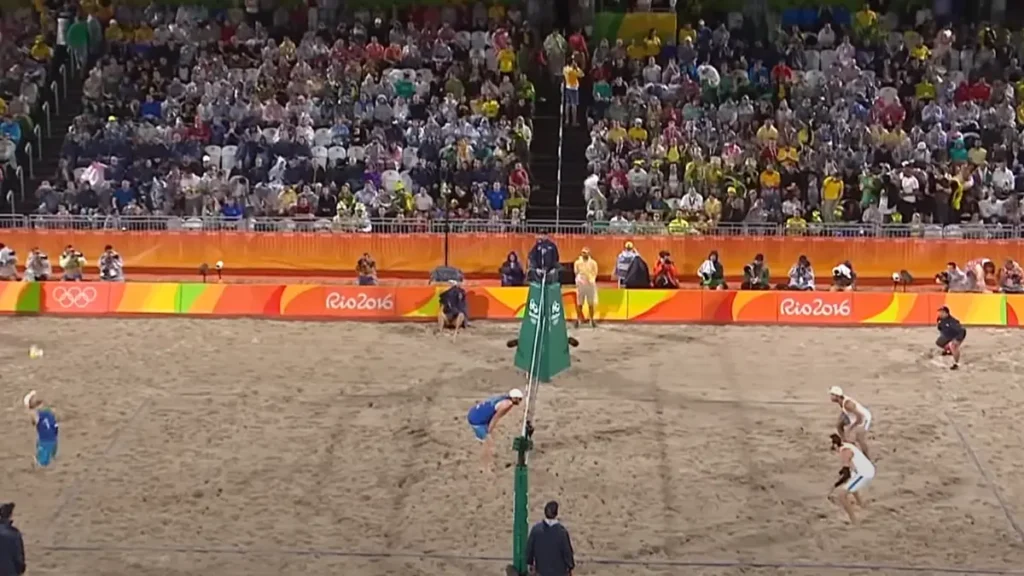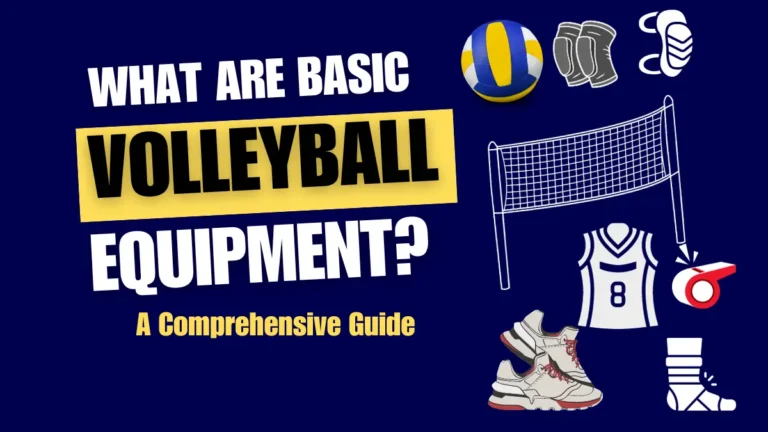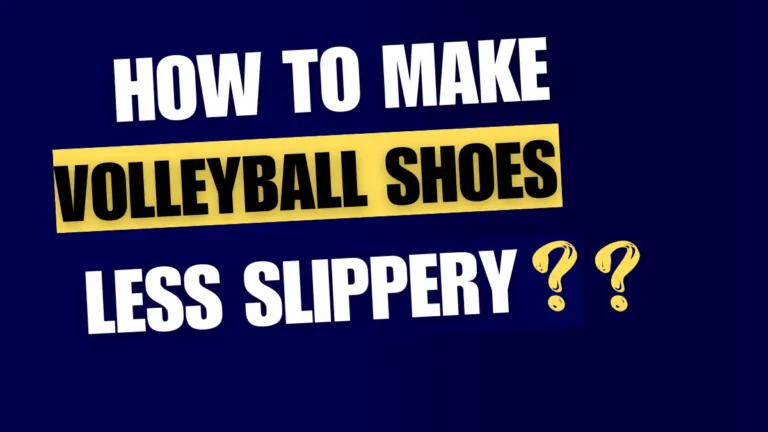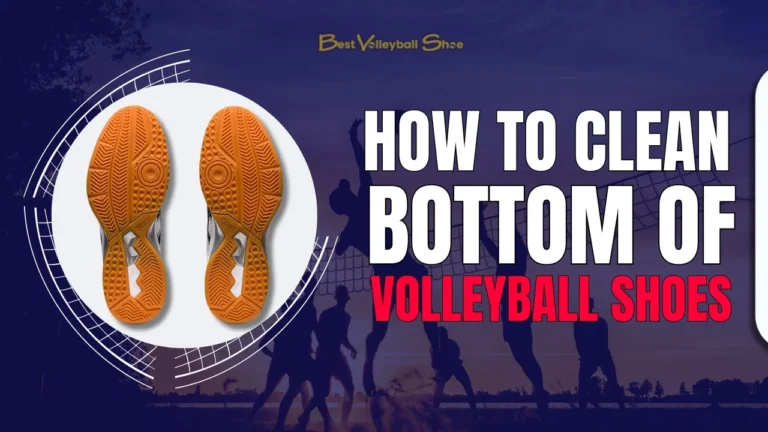How Long Is a Volleyball Game? Sets, Points, Duration

Volleyball is a thrilling game where players are constantly moving, jumping, and sprinting. This keeps both the fans and the players on the edge of their seats. However, as soon as the required sets are completed, the game ends, which is why many people want to know how long is a volleyball game?
The answer to this question doesn’t depend on a single factor but can be determined exactly after analyzing various things. Typically, a volleyball game lasts between 60 to 90 minutes and usually considers 2 out of 3 sets. However, this is not a hard and fast rule, as the actual duration of a volleyball game depends on the sets, points, and timeouts.
If you’re a volleyball game enthusiast and want to know how the scoring system works, how much time it takes to achieve specific numbers and points, what the duration of high school volleyball and college volleyball is, and much more, read the article till the end.
Understanding the Basic Structure of a Volleyball Game
In volleyball, the game is split into sets. How many sets you play depends on how competitive the game is. Usually, a team has to win a predetermined number of sets to secure victory in the overall game. The sets can be different in length, which affects how long the volleyball game lasts.
Points System
In volleyball, every time the ball is hit, a point is earned, no matter which team serves. The team that gets to a certain number of points first, usually 25, and is ahead by two points wins the set. If both teams are tied at 24 points, they keep playing until one team gets ahead by two points.
Sets
- Matches can be played as best-of-three sets (common in recreational and lower-level competitions) or best-of-five sets (typically in professional and international matches).
- Each set is played to a designated point total, traditionally 25 points. However, variations exist, and some competitions may use a rally scoring system where points can be scored on every play.
Duration and Competitive Factors
- The duration of a volleyball game can vary based on the number of sets played and the intensity of each match. Generally, matches can range from around 60 minutes for best-of-three sets to over 2 hours for best-of-five sets in high-level competitions.
- The pace and duration of a match are influenced by factors such as the level of competition, teams’ strategies, and the frequency of extended rallies on the court.
How Long is a Volleyball Games in High School?
High school volleyball games typically consist of a best-of-three or best-of-five set format. In a best-of-three game, the team that wins two sets first wins the whole game.
In a best-of-five game, the team that wins three sets first wins the whole game. Let’s get started with the basic concepts of Best of Three or Five Formats.
Best-of-Three Format
In a best-of-three format, the first two sets are played to 25 points, with a team needing to win by two points. If a third set is needed, it’s often played until one team gets 15 points and is ahead by two points to win. In high school volleyball, games like this usually take 60 to 90 minutes.
Best-of-Five Format
In a best-of-five game, each set goes up to 25 points, and a team has to win by two points. If there’s a fifth set, it’s usually played until one team reaches 15 points and is ahead by two points to win. High school volleyball matches with this setup typically take around 1.5 to 2 hours from start to finish.
Middle school volleyball games often follow a similar format to high school games but with shorter sets. The usual way to play is best-of-three. The first two sets go up to 21 points, and if needed, the third set goes to 15 points. It is also important to note that each set is 25 minutes long. However, Middle school volleyball games typically last between 45 to 60 minutes.
How Long Are College Volleyball Games?
College volleyball games are usually longer than high school games. In this setup, the first team to win three sets out of 5 is the winner of the match.

Along with it, each set is played until one team reaches 25 points and is ahead by at least two points. If the teams are tied at 24-24, they keep playing until one team gets a two-point lead.
If the game goes to a fifth set, also called a deciding set, it’s played to 15 points instead of 25. The team still needs to win by two points.
With this format and the breaks between sets, a typical college volleyball game lasts about 90 minutes to 2 hours. But if the game is very close or the sets go on for a long time, it can take even longer.
Things like time-outs and TV commercials can also make the game last a bit longer than usual.
NCAA Division I, II, and III
In NCAA Division I, II, and III volleyball, matches follow the best-of-five format described above. Due to the longer format and higher level of competition, college volleyball games often last between 2 to 3 hours.
How Long Do Professional Volleyball Games Last?
Professional volleyball games, such as those in the Olympics or international competitions, follow a best-of-five set format similar to college volleyball. However, the level of competition and the possibility of longer rallies can extend the duration of the game.
FIVB (Fédération Internationale de Volleyball) Rules
FIVB, the international governing body for volleyball, oversees the rules for professional and Olympic volleyball competitions. In official matches, the winning team is the first to win 3 sets.
Each set goes to 25 points, and the team must win by 2 points. The fifth set, if necessary, is played to 15 points. Professional volleyball games can last anywhere from 2 to 3 hours, depending on the length of the rallies and the number of sets played.
Indoor Volleyball Game Duration
Indoor volleyball match length depends on the competition level and number of sets. Most matches have five sets. Sets usually go to 25 points, but the last set goes to 15. A match often takes 1 to 1.5 hours.
How Long Is a Beach Volleyball Game?
Beach volleyball games are usually shorter than indoor volleyball games. Beach volleyball games are quicker because the teams are smaller (just two players), and the court is not as big. This makes the game move faster.
In beach volleyball, a game is usually played in a best-of-three-set format. The team that is first to win two sets is the winner of the game.

Each set goes up to 21 points. To win a set, a team needs to be ahead by 2 points. If the score is 20-20, they keep playing until one team gets ahead by 2 points.
Moreover, beach volleyball matches with this setup often last from half an hour to an hour. The fast speed makes beach volleyball fun for both players and fans. So, if you want a fast and fun game on the beach, beach volleyball is a great choice!
Volleyball Game Duration, Sets, and Points by Level
| Game Name | Duration | Sets | Points |
| Middle School Volleyball | 45-60 minutes | Best-of-three | Sets 1 & 2: 21 points Set 3 (if necessary): 15 points |
| High School Volleyball(Best-of-Three) | 60-90 minutes | Best-of-three | Sets 1 & 2: 25 points Set 3 (if necessary): 15 points |
| High School Volleyball(Best-of-Five) | 90-120 minutes | Best-of-five | Sets 1-4: 25 points Set 5 (if necessary): 15 points |
| College Volleyball | 90-180 minutes | Best-of-five | Sets 1-4: 25 points Set 5 (if necessary): 15 points |
| Professional Volleyball | 120-180 minutes | Best-of-five | Sets 1-4: 25 points Set 5 (if necessary): 15 points |
| Beach Volleyball | 30-60 minutes | Best-of-three | Sets 1 & 2: 21 points Set 3 (if necessary): 15 points |
| Indoor Volleyball | 60 – 90 minutes | best-of-five | Sets 1-4: 25 points Set 5 (if necessary): 15 points |
Note: All sets require a two-point lead to win.
Factors Affecting the Length of a Volleyball Game
Several factors can influence the duration of the on the volleyball Volleyball court, including:
- Level of Competition: Higher levels of competition often feature longer rallies and more sets, resulting in longer games.
- Timeouts and Breaks: Teams can call timeouts in each set, making the game longer. There are also pauses between sets.
- Substitutions: Teams can only swap a few players per set. This can make the game stop for a bit.
- Injuries and Challenges: Injuries to players or challenges to official calls can lead to temporary stoppages in play, prolonging the game.
Key Takeaways
How long a volleyball game lasts changes based on how competitive the match is and the rules used. To sum up:
Understanding the factors that affect the duration of a volleyball game can help players, coaches, and fans better plan their schedules and enjoy this exciting sport.
Frequently Asked Questions
How many minutes is a volleyball game?
The duration of a volleyball game can vary. Still, on average, a game can last anywhere from 60 to 180 minutes (1 to 3 hours), depending on the level of competition and the specific format being used.
How many periods are in a volleyball game?
Volleyball games are not divided into periods. Instead, they are played in sets. Depending on the competition level, a match usually has either 2 out of 3 sets or 3 out of 5 sets.
Does volleyball go to 25 or 21?
In most volleyball competitions, sets are played to 25 points, and teams must win by a two-point margin. But in beach volleyball, sets usually go up to 21 points. To win, a team must be ahead by 2 points.
Is there halftime in volleyball?
There is no official “halftime” in volleyball. Instead, there are short breaks between sets, usually lasting about 2-3 minutes. These breaks allow teams to rest, regroup, and discuss strategies for the upcoming set.





